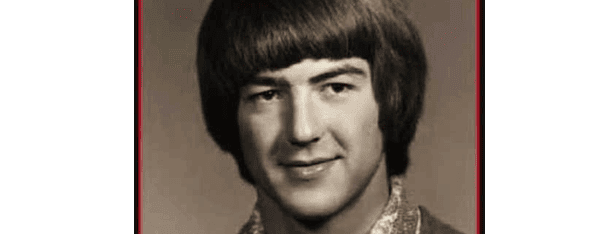
06 Jun THE INNOCENT MAN -THE STORY OF RONALD WILLIAMSON
THE INNOCENT MAN THAT WAS SENTENCED TO OKLAHOMA’S DEATH ROW-THE STORY OF RONALD WILLIAMSON
Ron Williamson was born in Ada Oklahoma on February 3rd, 1953. Ron was a natural athlete and excelled in several sports, but his primary interest was baseball. As is usually the case with star athletes in small towns, by the time he was in high school, Ron was a local hero. After hitting .500 in the state championships, for Asher high school, in his senior year he was the 41st pick in the 1971 draft. Ron was chosen as the second pick by the Oakland A’s, and in 1972 he turned down a scholarship from the University of Oklahoma to join the A’s minor league in Coos Bay.
Shoulder injuries plagued the once promising pitcher, and by 1977 at the age of 24, his career was over. And he returned to the place of his former glory and fame, Ada, Oklahoma. What Ron found on his return was that his time had passed, his hero worshipers had moved on, and his failure was his most well known attribute. Ron also began to succumb to the effects of a variety of psychiatric disorders, and self medicated with drugs and alcohol.
On December 7, 1982, 21 year old Debbie Carter went to the Coachlight, a bar in Ada, that was frequented by Ron Williamson, for her shift as a waitress. The following day Debbie was discovered in her garage apartment, the victim of murder. Her killer had broken into the apartment, raped and strangled her, then had written on her body with ketchup. The scene was horrible and it sent shock-waves through the town of Ada, and grabbed the attention of the entire state.
Police interviewed Glen Gore, another patron that was present at the Coachlight that evening. Gore told police that he had seen Williamson arguing with Carter that evening. Police were also told that Cater had revealed to a friend that Williamson “made her nervous”.
Police quickly identified Williamson as a suspect along with his friend Dennis Fritz. Neither men could provide an alibi for the evening, as they could not remember where they were on the night of the murder. Williamson agreed to take a polygraph test which was “inconclusive”. He agreed to another test only to have the same results. Without any physical evidence, a confession, or solid circumstantial evidence, the case went cold.
In 1986 nearly four years after the death of Debbie Carter, Ron Williamson was in the Pontotoc County jail in Ada, awaiting trial on some bad checks. While there an inmate named Terri Holland, claimed that the usually reserved and quiet Williamson, confessed to her that he had in fact murdered Debbie Carter.
Based upon this information, police exhumed the body of Debbie Carter in May of 1987. Police arrested Williamson shortly after, and during an interview Agent Gary Rogers of the Oklahoma State Bureau of Investigation claims that Williamson told him about a dream he had in which he committed the murder.
Fritz was also arrested on suspicion of murder and held in the county jail. One day before officials would have been forced to release Fritz, an inmate that was paired in a cell with him, came forward and granted police a taped interview in which he detailed Fritz’s confession. With that stroke of luck, the DA was able to charge Dennis Fritz with murder as well.
The state’s case was stacked with jailhouse snitches and flimsy circumstantial evidence, but when hairs that were found at the scene were analyzed by the forensic chemist lab in Oklahoma City, police got their break. The office in Oklahoma City, led at that time by Joyce Gilchrist, found that the hairs at the scene were a match to hairs taken from Williamson.
Williamson and Fritz were tried for the rape and murder of Debbie Carter. The star witness for the state, Glen Gore, placed Williamson at the bar the night of Debbie’s murder, and the hair analysis placed him in her apartment.
Both men were convicted. Fritz received life in prison without the possibility of parole, while Ada’s former hometown hero and native son was sentenced to death.
In the years that followed Williamson’s mental health deteriorated. Two years after he was sentenced he was moved to the new crown jewel of the Oklahoma Department of Corrections, “H Unit”. Located on the grounds of the Oklahoma State Penitentiary in McAlester, “H Unit” is a cavernous dungeon built underground without windows, fresh air, or sunlight. Williamson went for months without showering and barely ate. He paced his 7-by-15-foot cell, screaming about his innocence. At night, the guards on duty would sometimes taunt him over the intercom.
Williamson filed numerous appeals; all were denied. On Sept. 22, 1994, just five days before he was scheduled to be executed, Williamson’s public defender filed a habeas corpus petition. (Writs of habeas corpus are granted so that individuals in prison who have exhausted all of their available appeals can nonetheless contest their imprisonment in a court of law.) The petition was filed on the grounds of ineffectual assistance of counsel, claiming that Williamson’s trial lawyer failed to acknowledge Williamson’s lack of mental competency to stand trial, hadn’t adequately investigated witnesses, and had failed to introduce as evidence a videotaped confession of the crime by Ricky Joe Simmons (a mentally ill drifter). Williamson was granted a stay of execution and moved to a special care unit for psychiatric treatment while the court considered the petition.
On Sept. 9, 1995, the habeas petition was granted by district court and affirmed by the 10th Circuit Court of Appeals on April 10, 1997. Williamson was to have a new trial.
At this point, Mark Barrett, Williamson’s attorney, gained permission to get a DNA analysis of the physical evidence from the Carter case for Williamson’s new trial. Dennis Fritz, along with The Innocence Project, filed restraining motions to ensure that enough evidence was preserved and could be tested for both of their cases.
Williamson was in the prison psychiatric hospital when he learned that the DNA tests revealed that neither he nor Fritz could have raped the victim. In fact, the DNA results also proved that the experts had misidentified every single hair taken from the crime scene: none of them belonged to either of the two men. The DNA profile obtained from the crime scene, however, matched Glen Gore, the state’s main witness at trial.
In September of 2001, Joyce Gilchrist was fired. An FBI investigation revealed that Gilchrist and her office had been falsifying evidence for years, most notably hair analysis. She had been involved in approximately 3,000 cases, including at least 23 cases where defendants were eventually sentenced to death and have either been executed or remain on death row. 11 of those people were executed. Ron Williamson was five days away from being her twelfth victim. (A note: Gilchrist was never jailed or has spent one day in prison. Her continued freedom is a disgrace to the Oklahoma justice system.)
Fritz and Williamson were exonerated and released on April 15, 1999. They filed a civil lawsuit accusing the Pontotoc County district attorney and other defendants — including the city of Ada, the state of Oklahoma, Gore, and county police officers — of engineering “a false case that consisted of faulty forensic evidence, fictitious confessions reported by jailhouse snitches with overwhelming motives to lie, in addition to the self-serving lies of the actual murderer.” The lawsuit also named state Department of Corrections officials, alleging that Williamson was the target of “malicious and sadistic action” because he was placed in solitary confinement as an alternative to providing him treatment for a mental disorder. Williamson and Fritz settled the suit and both men received an undisclosed sum of money.
Soon after their release, Williamson and Fritz visited New York, where they took a tour of Yankee Stadium. Williamson said he “just got a taste of how much fun they were having up here.” Sadly, on December 4, 2004, Williamson died in an Oklahoma nursing home, surrounded by his family. He had recently been diagnosed with cirrhosis of the liver. He was 51 years old.
Ron Williamson and Dennis Fritz spent eleven years in prison for a crime they did not commit. Williamson was nearly executed, and was forced to endure the horrors of mental illness without treatment. Their story is incredibly sad and tragic, as was the horrible murder of Debbie Carter.
Although Ron Williamson left this world too soon after the exoneration he fought so hard to achieve, his legacy continues as a striking example of the depths that some will go to and the lengths that others, such as his attorneys and the Innocence Project will go to protect the truth, and the integrity of our system.
It would be irresponsible to not point out the debate regarding the death penalty as well. Ron Williamson was nearly killed by the government for a crime he did not commit. And this was based, in part, upon falsified evidence by a corrupt government official. The accused murderer was nearly the victim of a state sponsored murder. If it wasn’t for the actions of a last minute appeal, after years of other appeals being ignored, his life would have been taken and the truth would have been buried with him in a a grave only marked by a DOC number. It is stories like that of Ron Williamson that should stand as reason for the abolition of capital punishment.
“It is better and more satisfactory to aquit a thousand guilty persons than to put a single innocent one to death” – Maimonides (1260)
“Capital Punishment is against the best judgment of modern criminology and, above all, against the highest expression of love in the nature of God.” – Dr. Martin Luther King Jr.







No Comments